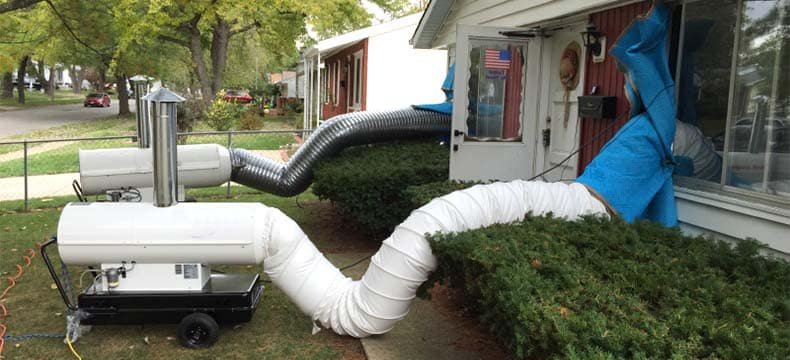Bed bug infestations can turn your sanctuary into a nightmare, prompting desperate measures for eradication. Among the touted solutions, heat treatment stands out for its purported effectiveness. However, delving beyond the promises unveils a landscape rife with risks and limitations.
This article aims to dissect the potential dangers associated with bed bug heat treatments, juxtaposing them with the safer and more practical alternative of chemical treatments. By understanding the nuances of each approach, readers can make informed decisions to combat bed bug infestations effectively while safeguarding their homes and well-being.
Understanding Bed Bug Heat Treatments:
At first glance, heat treatment seems like a silver bullet for bed bug eradication. By raising temperatures to lethal levels, typically between 117°F and 122°F, it promises to exterminate bed bugs and their eggs. However, beneath the surface, several risks lurk, casting doubts on its efficacy and safety.
- Time-Consuming Process: One of the primary drawbacks of heat treatments is the time it consumes. Setting up, applying heat, and cooling down can render a room or structure out of commission for eight hours or more. This prolonged disruption to daily life poses significant inconvenience, especially for households with busy schedules or limited accommodation options.
- Logistical Complications: Preparing for a heat treatment involves meticulous coordination to remove plants, perishable foods, delicate items, and pets from the treatment area. This logistical challenge adds another layer of complexity and stress, requiring homeowners to rearrange their living spaces temporarily.
- Fire Hazard: The potential for fire hazards looms large during heat treatments. Despite precautions, such as turning off sprinkler systems, the risk of fire remains significant. A single mishap could lead to devastating consequences, endangering lives and property.
- Uneven Application and Belongings Damage: Achieving uniform heat distribution throughout the treatment area is essential for effective bed bug elimination. However, inexperienced technicians may struggle to ensure even application, leading to pockets of inadequate heating. Moreover, heat penetration can damage sensitive belongings, such as electronics, artwork, and furniture, exacerbating the financial and emotional toll on homeowners.
Comparing with Chemical Treatments:
In contrast to the risks associated with heat treatments, chemical treatments offer a safer and more practical alternative for bed bug control. Here’s how they stack up:
- Cost-Effectiveness: Chemical treatments are generally more affordable than heat treatments, making them accessible to a broader range of homeowners. With lower upfront costs and comparable efficacy, chemical treatments provide a budget-friendly solution without compromising on results.
- Targeted Application: Experienced technicians can precisely target chemical treatments to infested areas, ensuring thorough coverage and maximum efficacy. Unlike heat treatments, which require uniform heat distribution, chemical treatments offer flexibility and precision in addressing bed bug hotspots.
- Long-Term Control: Chemical treatments provide residual protection against bed bugs, offering long-term control and peace of mind. With follow-up treatments and inspections, homeowners can maintain a bed bug-free environment without the logistical challenges and safety concerns associated with heat treatments.
In light of the risks and limitations of bed bug heat treatments, chemical treatments emerge as the preferred choice for effective and safe bed bug control. Tulsa Bed Bug Specialist offers comprehensive chemical treatment solutions tailored to your specific needs. Our experienced technicians employ advanced techniques and EPA-approved products to eradicate bed bugs while minimizing disruption to your daily life. With our commitment to excellence and customer satisfaction, we guarantee reliable results and peace of mind.
Conclusion:
When combating bed bug infestations, it’s essential to weigh the risks and benefits of different treatment options carefully. While bed bug heat treatments promise quick and thorough eradication, they come with significant drawbacks, including time consumption, logistical complications, fire hazards, and belongings damage. In contrast, chemical treatments offer a safer, more practical, and cost-effective alternative, providing long-term control and peace of mind. Trust Tulsa Bed Bug Specialist for expert chemical treatments and reclaim your home from bed bugs today.


Recent Comments